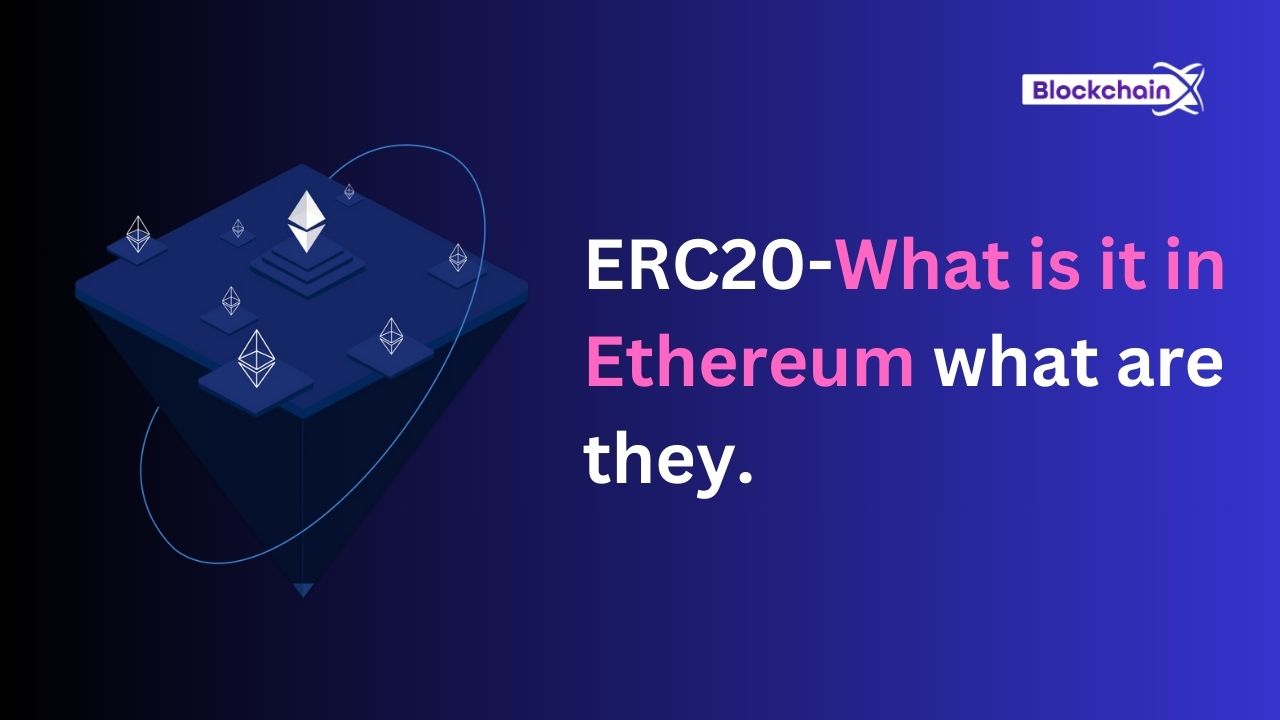ERC20-What is it in Ethereum what are they.
 Deactivated User
Deactivated User
The Ethereum blockchain was created as a convenient and functional platform for launching dApps. The chain quickly became popular.
What is the ERC-20 standard in simple words
Before the advent of the Ethereum blockchain, a new network had to be created to launch a coin. This is a complex job that requires a team of programmers to implement. Since the creation of the Ethereum chain in 2014, startups have been able to launch tokens based on it.
To make the process even easier, the developers proposed creating tokens using a single template. This significantly reduced the amount of work required. In 2023, any user can launch a token using to create ERC20 token standard. Programming experience is desirable, but not required. Topic blogs have templates for key features.
Decoding the abbreviation and essence
ERC stands for Ethereum Request for Comments. This is the name of all proposals for updating the code in the blockchain, 20 is its serial number. ERC-20 is not the only attempt to standardize Ethereum tokens.
History of appearance
Initially, developers created their own tokens based on Ethereum. The code for them had to be written from scratch. While the network was young, there were no difficulties, but as it grew, compatibility problems began to appear. In addition, many different smart contracts required high computing power.
The solution was proposed in 2015 by programmer Fabian Vogelsteller and blockchain founder Vitalik Buterin. They developed a unified standard for cryptocoins. However, it was accepted only 2 years later — in 2017. The delay arose due to the complexity of the procedure:
First, the creators are introducing the Ethereum Modernization Initiative (EIP). A brief presentation and a full description of the protocols used must be provided.
Community members are reviewing the proposal.
If necessary, corrections are made.
Voting is underway.
If the community supports the idea, the developers begin to implement it.
Why is it needed and functionality?
Before the launch of a single standard, developers were faced with the problem of token compatibility. Each of them had a unique smart contract. To run the application, a large amount of computing memory was needed, so dApps worked slowly, froze and crashed.
In addition to standard functions (transfer of assets, checking balance, permission to manage the platform), ERC20 token development network tokens have the following options:
Linking the price to the total capitalization of the token. This provides a reserve fund. There is automatic balancing of tokens.
Freezing an asset with the ability to unfreeze if necessary.
Flexibility. Developers have the opportunity to add unique features to the coin.
Is it possible to mine
Standard tokens do not have their own infrastructure to validate blocks. Transfers on the network are carried out using the computing power of the Ethereum blockchain. Validators receive ETH coins as a reward for their activities. Only developers can create ERC-20 tokens. Usually they release the entire volume at the same time and distribute it through ICO or IEO. Also, the founders of the project can provide for the possibility of an additional issue.
Advantages
The development of the ERC-20 standard has simplified the creation of cryptocurrencies. On average, an experienced programmer can launch a new coin in 40–60 minutes. A smart contract is written in the Solidity language, which is in many ways similar to JavaScript. Thanks to high liquidity, you can quickly exchange assets on DEX.
Token fungibility
Creators of standard assets have the right to establish the degree of divisibility of units characteristic of all digital coins. For example, Bitcoin can be divided into 100 million satoshis. All units of cryptocurrency are identical and have the same value. Therefore, it makes no difference which specific token the investor owns. This allows you to use standard assets for settlements.
Various uses
Tokens are easily customizable, so developers can add useful features to them within projects. For example, standard assets can be used for settlements on the platform, as in-game currency, to participate in voting, and to generate income in deposits and liquidity pools.
Popularity
By June 2023, users had made more than 1.26 billion transactions with Ethereum tokens. The ecosystem is served by 41 DEX. Coins can also be exchanged in wallets — MetaMask, Trust Wallet, Atomic Wallet and others.
Flaws
To transfer standard coins you need to pay gas. Vitalik Buterin’s team is committed to increasing the throughput of the blockchain.
Scalability issues
The main disadvantage of most blockchains is low throughput. To increase transaction speed, developers have to sacrifice security and decentralization of the chain. In 2021, at peak demand, fees on Ethereum reached $100, which led to the creation of many clone networks and second-layer (L2) blockchains. Despite this, in 2023 Ethereum continues to lead in terms of the volume of blocked funds (56.8% of total TVL).
Easy to scam
A single standard simplifies the launch of assets as much as possible. To create a cryptocurrency and list it on a DEX, you just need to enter the contract address and provide liquidity. No documents confirming the reliability of the project are required. This is taken advantage of by scammers who organize pyramids under the guise of blockchain platforms.
Other risks
The ERC20 token development company in Ethereum standard has been actively used by developers since 2017. Despite their proven security, smart contracts can have hidden vulnerabilities. There are other risks for users.
For example, standard tokens do not have their own tools for processing transactions. To do this, you need to run the transfer function (regular transaction) or transferFrom (participation in ICO).
Another disadvantage of smart contracts is related to their uncertain legal status. In 2023, cryptocurrency is not legalized in many countries. Smart contract technology is in a gray area. The main requirement of most contracts is verification of participants. Due to the anonymity that blockchain technology guarantees, it is difficult to implement.
Where is ERC-20 used?
Basically, startups use classic cryptocurrencies to finance developments. Investors can participate in the ICO or buy the coin after listing. The functionality of the asset depends on the purpose of the native platform. The more options, the higher the demand for the coin and the better the prospects for long-term price growth. Platforms using the DAO governance model typically add voting capabilities for all holders.
ERC-20 for stablecoins
ERC-20 for Security and Utility tokens
Subscribe to my newsletter
Read articles from Deactivated User directly inside your inbox. Subscribe to the newsletter, and don't miss out.
Written by
